Your Guide to Recessed Lighting
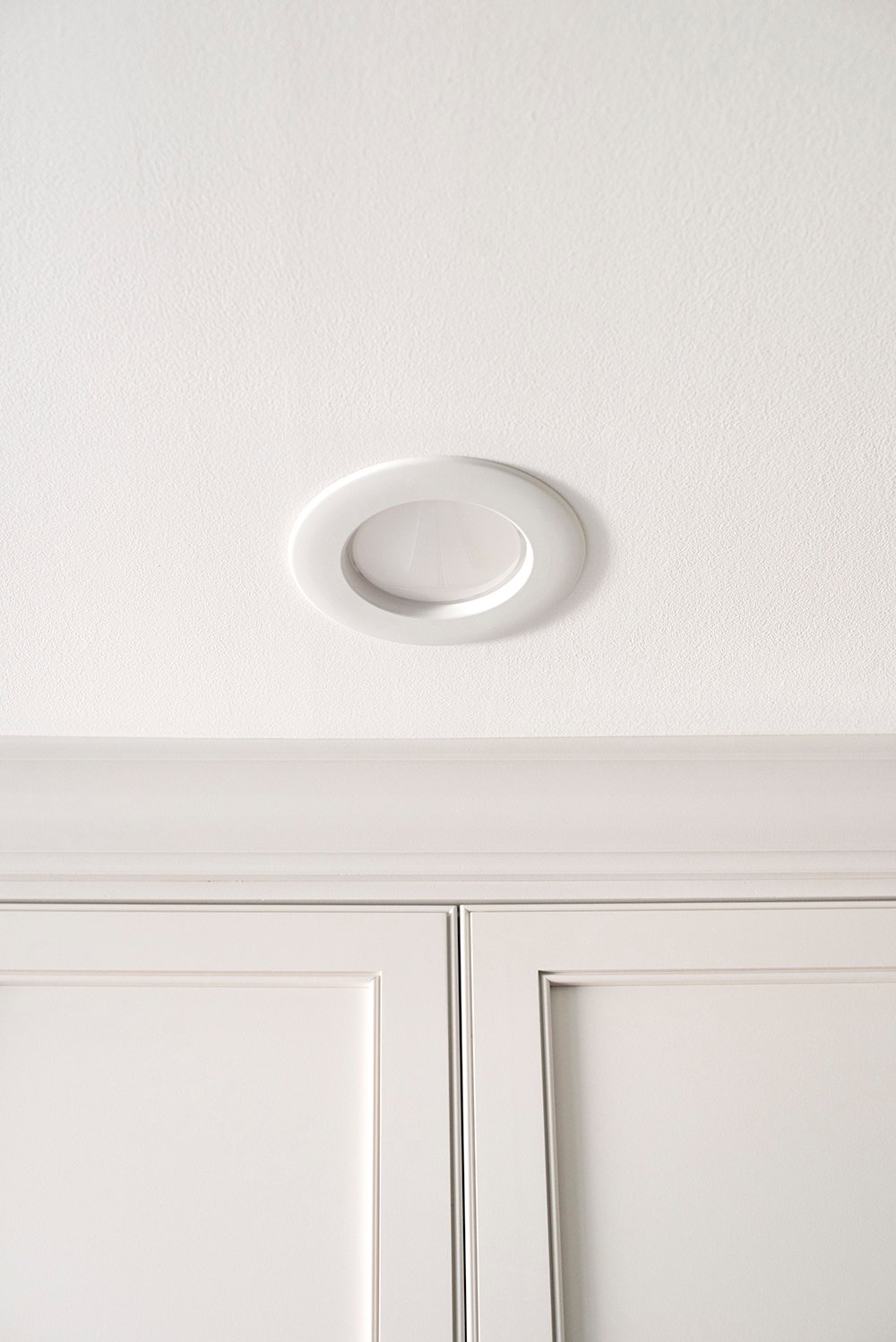 This post was actually requested from a reader and it left me pondering, “Why didn’t I think to share this info sooner?!” Lighting plans can be tricky to nail, especially if you’re mixing recessed (aka, can lights) with regular fixtures. I’m breaking it all down… where you need recessed lights, what kind you need, how to create a smart (and visually appealing) lighting plan, and more! The goal for recessed lighting is to add visibility, but also ambiance to your space. Click through for the details…
This post was actually requested from a reader and it left me pondering, “Why didn’t I think to share this info sooner?!” Lighting plans can be tricky to nail, especially if you’re mixing recessed (aka, can lights) with regular fixtures. I’m breaking it all down… where you need recessed lights, what kind you need, how to create a smart (and visually appealing) lighting plan, and more! The goal for recessed lighting is to add visibility, but also ambiance to your space. Click through for the details…
P L A C E M E N T
In terms of lighting, a basic rectangular room with zero architectural features obstructing the ceiling is super easy to plan. A minimal grid typically does the trick. Things get more difficult in kitchens or areas that have cabinets or built-ins that meet the ceiling. A basic recessed grid doesn’t exactly work as well in those types of spaces- from a functional or design perspective.
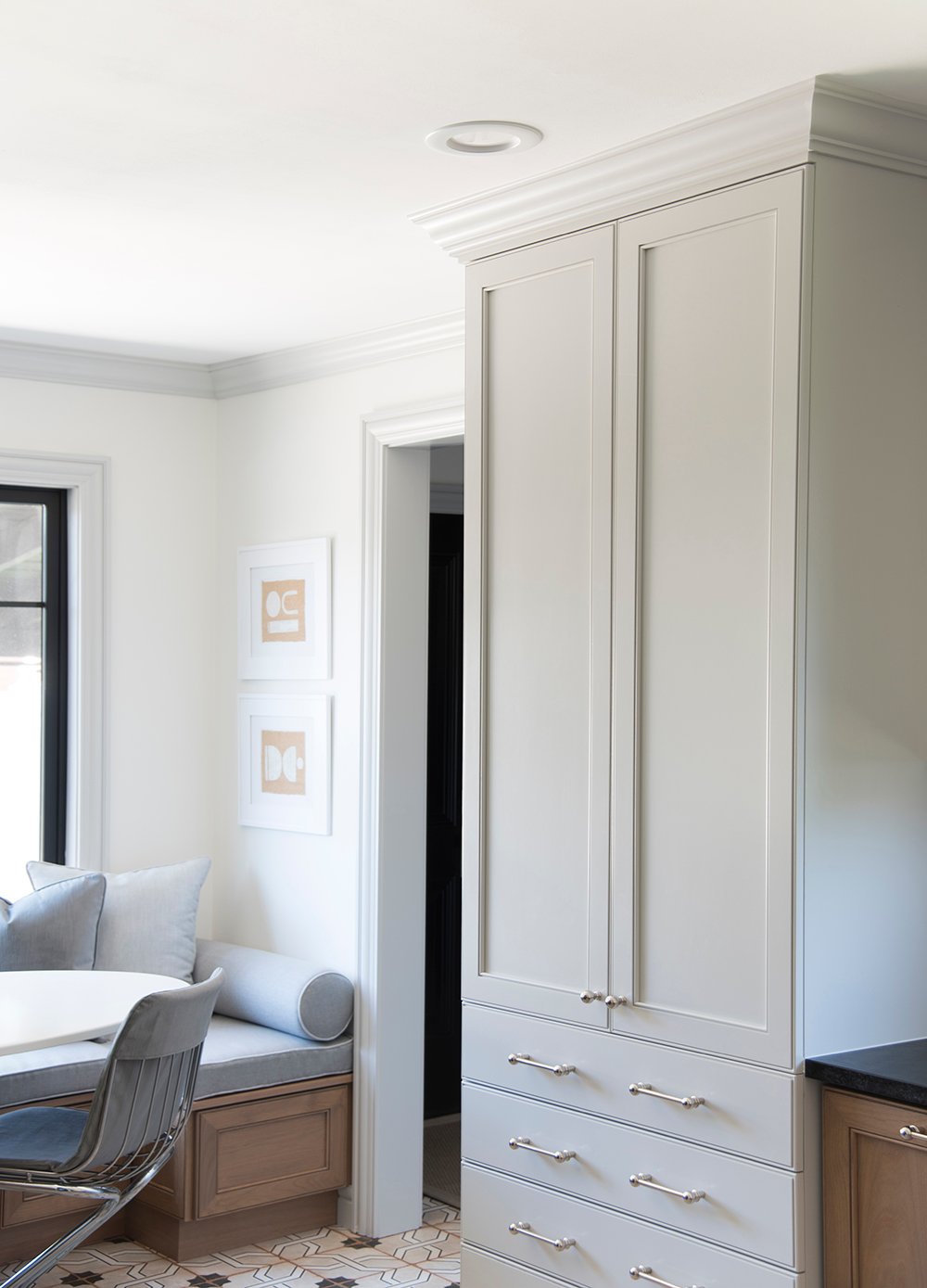 My biggest piece of advice is to be intentional when specifying the position of a recessed light. It should be functional, but also balanced visually. Take for instance, my pantry (shown above)… the light illuminates the pantry area, making it easier to find what I’m looking for, and it’s centered with the two cabinet doors- which makes the designer in me very happy.
My biggest piece of advice is to be intentional when specifying the position of a recessed light. It should be functional, but also balanced visually. Take for instance, my pantry (shown above)… the light illuminates the pantry area, making it easier to find what I’m looking for, and it’s centered with the two cabinet doors- which makes the designer in me very happy.
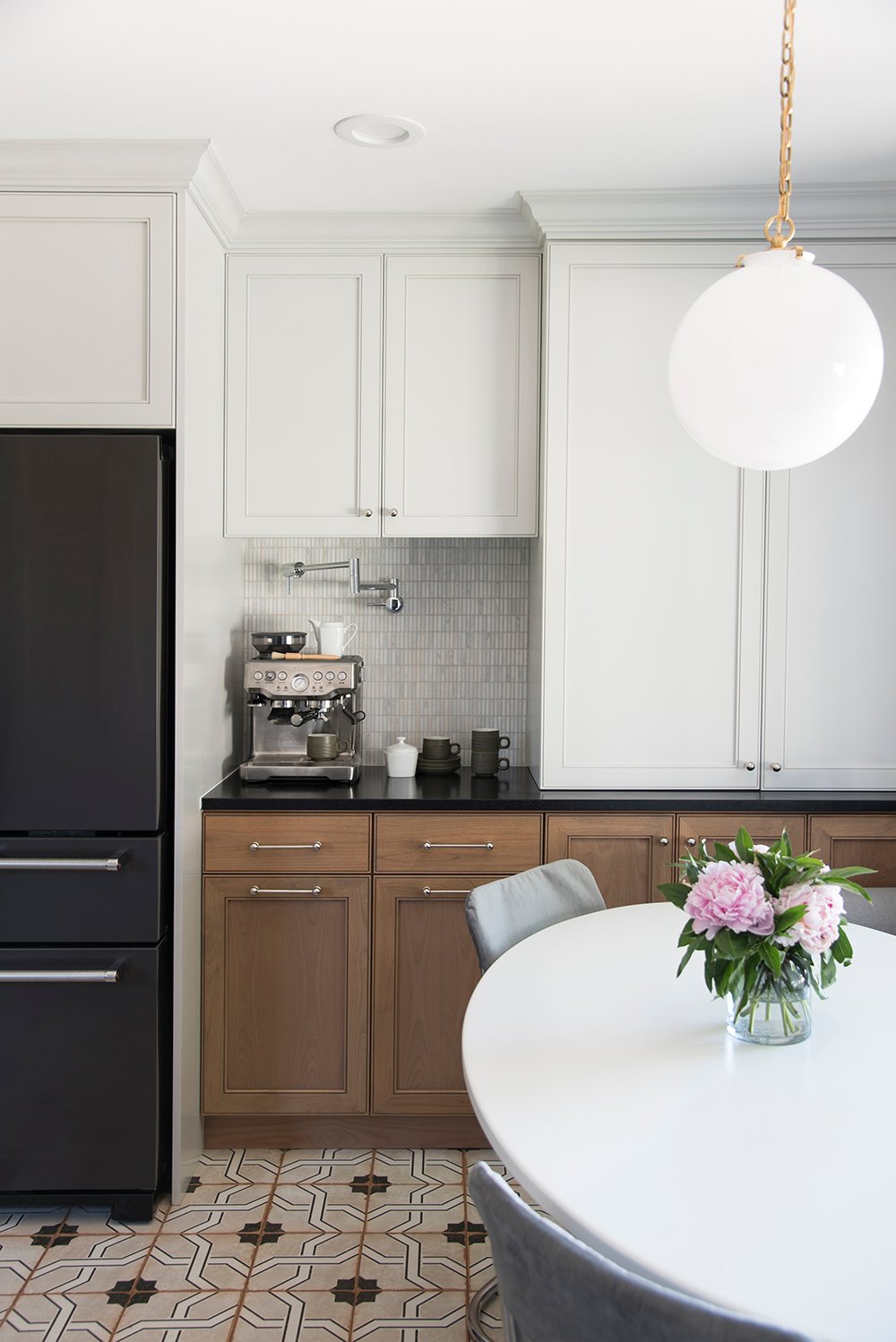 Instead of blanketing a space with a grid of lighting, introduce a recessed light (or two) to frame a vignette. This will not only provide lighting in key areas, but it will also draw your attention to a specific moment within a room. For example, installing a light over my coffee bar (pictured above), emphasizes the niche and adds more light for morning coffee making. Another win / win.
Instead of blanketing a space with a grid of lighting, introduce a recessed light (or two) to frame a vignette. This will not only provide lighting in key areas, but it will also draw your attention to a specific moment within a room. For example, installing a light over my coffee bar (pictured above), emphasizes the niche and adds more light for morning coffee making. Another win / win.
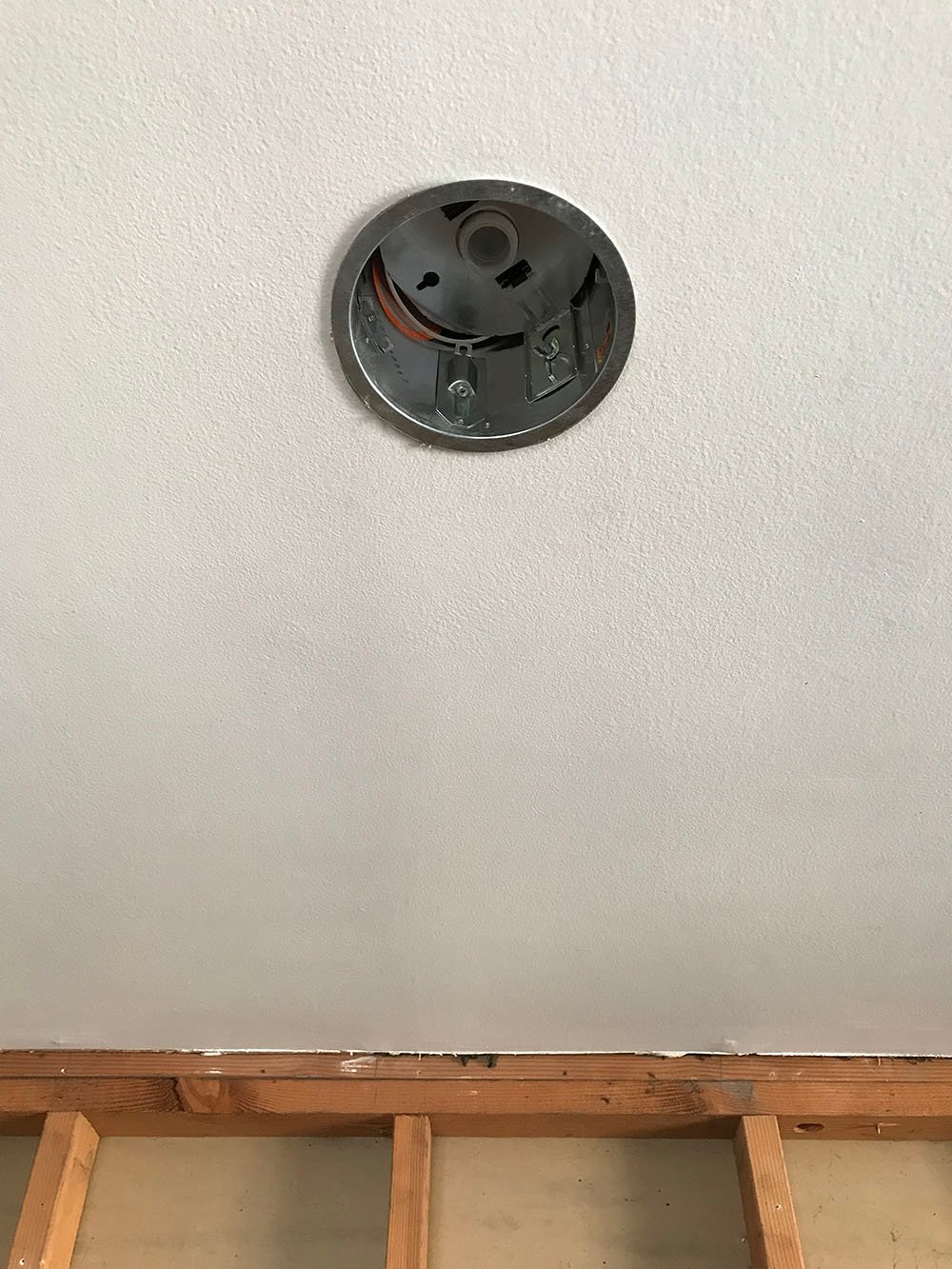 If you’re renovating and taking a space down to the studs (like we did), it’s easiest to make the recessed lighting plan while electrical is being ran. It can sometimes be tricky to plan lights that perfectly align with cabinetry or certain areas in a room, and this is where specific measurements are a must. I always make a lighting plan. Sometimes it’s as simple as marking in red where I want the lights positioned, and other times I’ll make a fancy elevation with measurements.
If you’re renovating and taking a space down to the studs (like we did), it’s easiest to make the recessed lighting plan while electrical is being ran. It can sometimes be tricky to plan lights that perfectly align with cabinetry or certain areas in a room, and this is where specific measurements are a must. I always make a lighting plan. Sometimes it’s as simple as marking in red where I want the lights positioned, and other times I’ll make a fancy elevation with measurements.
See how I marked can lights to be installed above the pantry, kitchen sink, oven, and coffee bar? I highlight those four vignettes, bringing them out slightly to also light the center of the room. They stair step each other, creating a nice balanced grid.
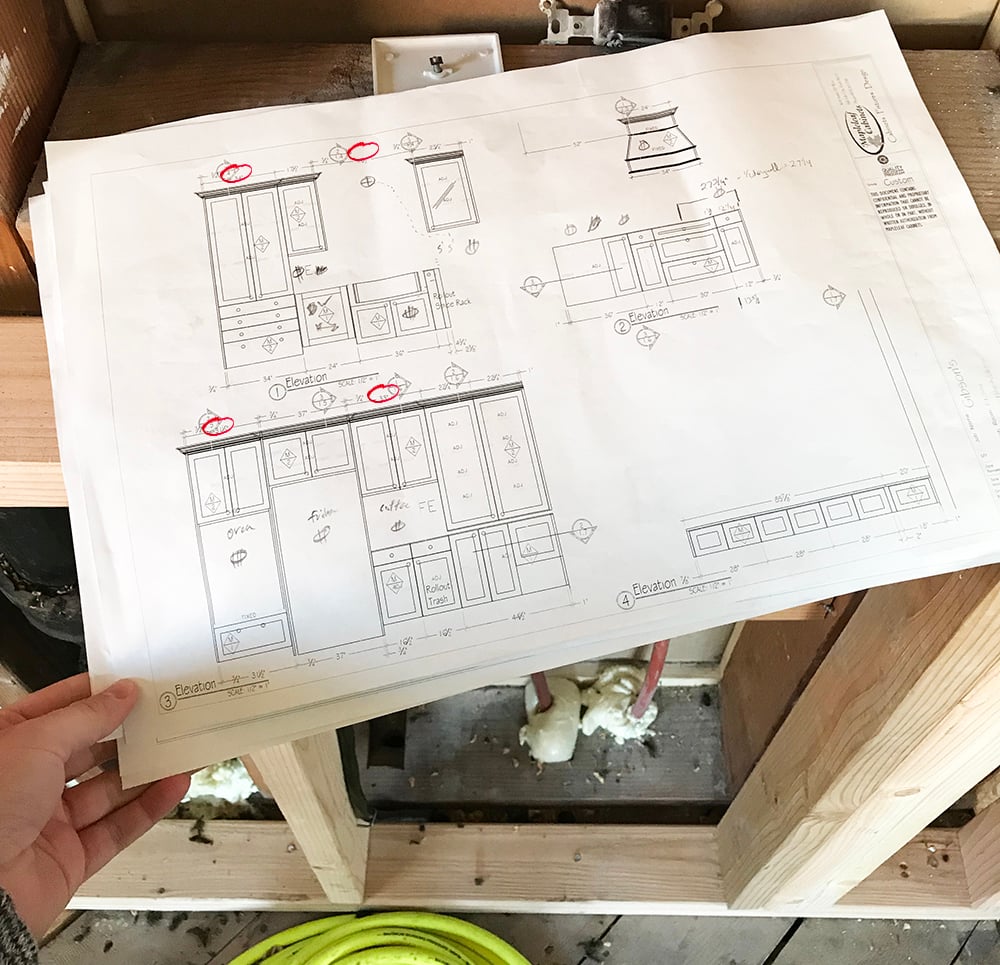 Here’s a peek at the process, in case you missed that earlier this year…
Here’s a peek at the process, in case you missed that earlier this year…
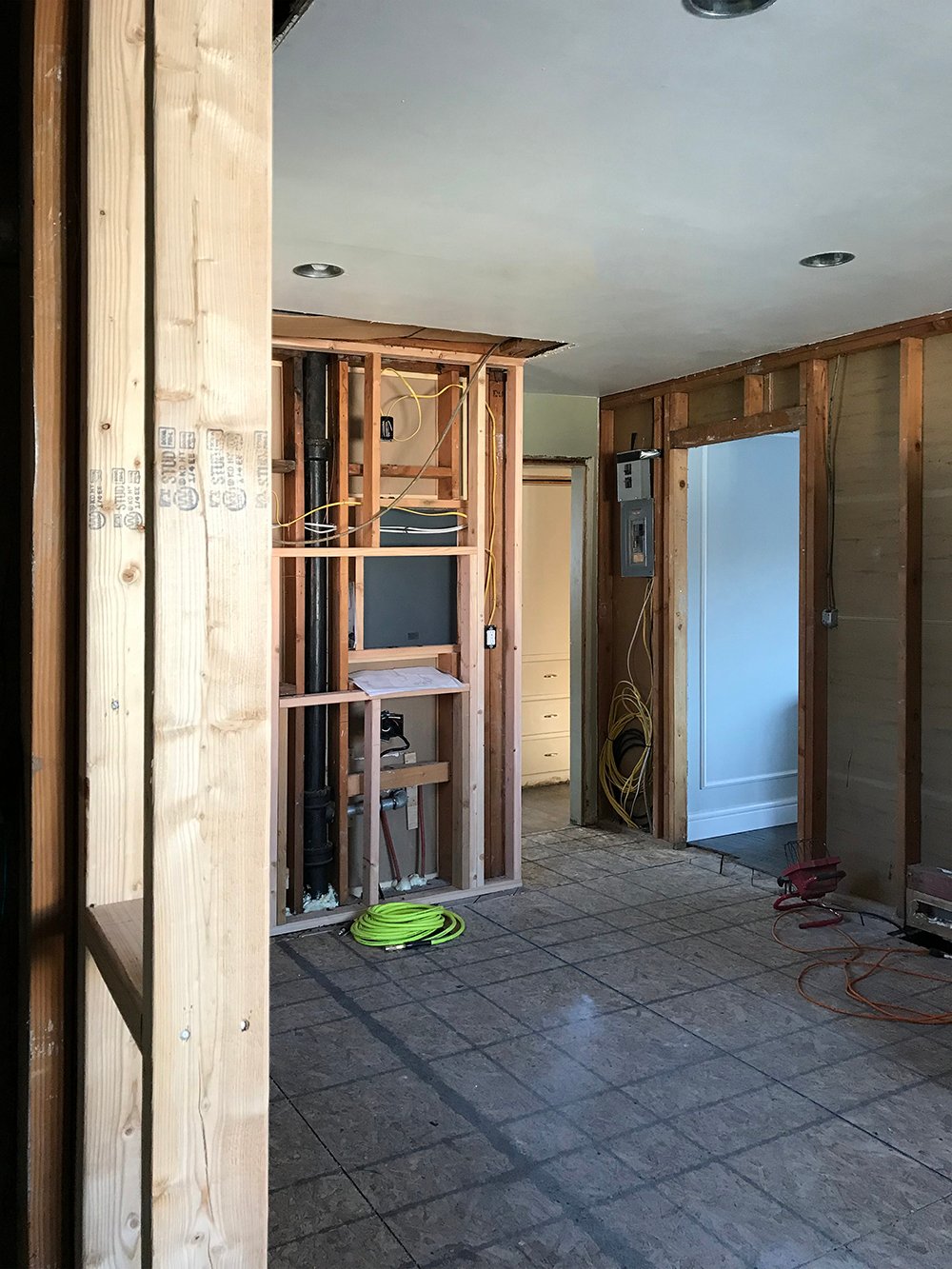 If you aren’t doing a total renovation, not to worry! I’ll usually just mark the ceiling with a sharpie, indicating where the light should be positioned (and pray there isn’t a stud there, ha).
If you aren’t doing a total renovation, not to worry! I’ll usually just mark the ceiling with a sharpie, indicating where the light should be positioned (and pray there isn’t a stud there, ha).
C O L O R
When discussing recessed lighting, there are two color elements that need to be decided on: the surround color and the bulb color. Let’s dive into the surround color first. Most people prefer their can lights to blend in with the ceiling and disappear when not in use. If that’s the case, definitely buy a recessed light with a white surround. Most of them are standard “ceiling” white and will match most any ceiling paint.
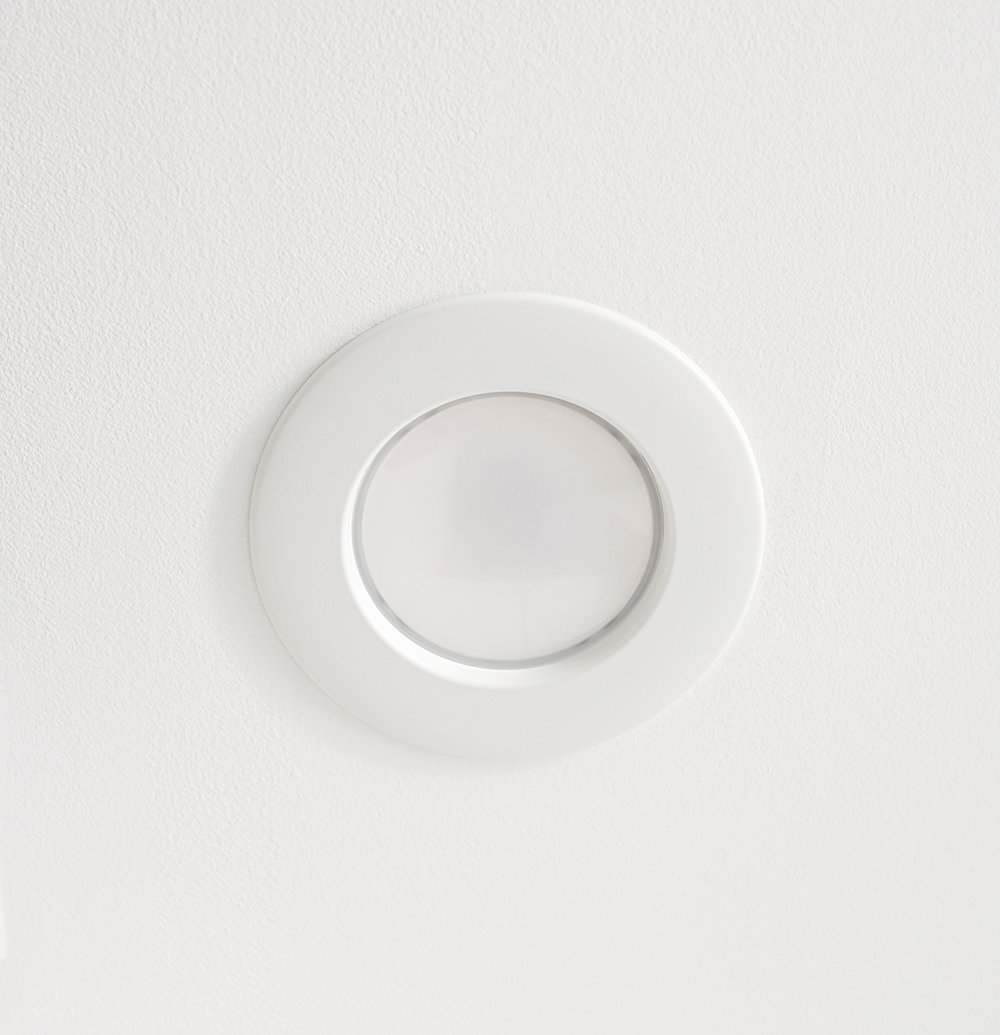 On the contrary, emphasis on your can lights can sometimes be a good thing- feel free to creative with the surround color. In our previous kitchen, I opted for a brass surround to tie in our cabinetry hardware. In an all white kitchen, it ended up being a welcomed addition and added the perfect amount of warmth.
On the contrary, emphasis on your can lights can sometimes be a good thing- feel free to creative with the surround color. In our previous kitchen, I opted for a brass surround to tie in our cabinetry hardware. In an all white kitchen, it ended up being a welcomed addition and added the perfect amount of warmth.
 Here is a close up to give you a better visual of what the brass looked liked…
Here is a close up to give you a better visual of what the brass looked liked…
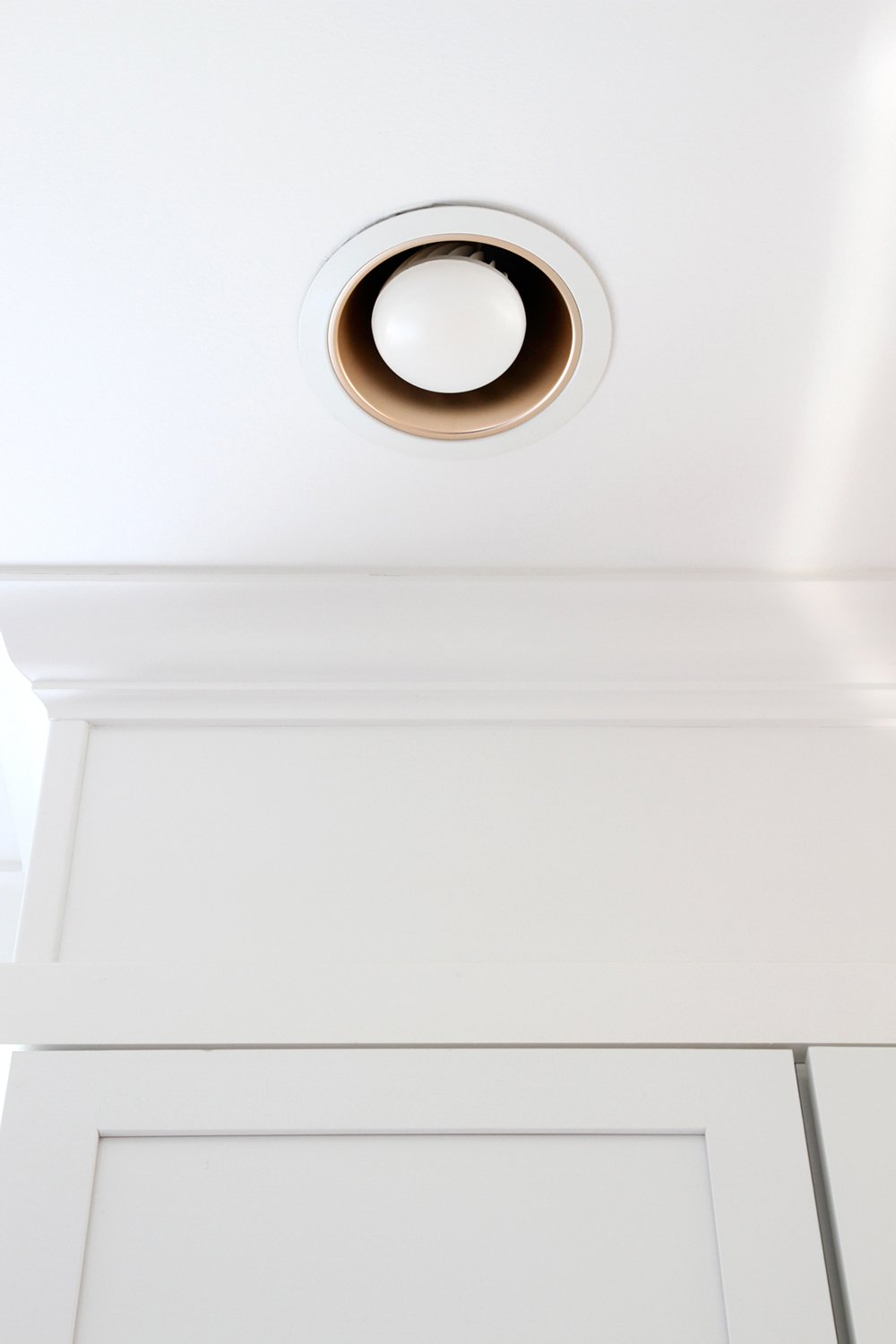 After deciding on the surround color, next you’ll want to choose the bulb. I like to aim for warmth when selecting bulbs for can lights. For a home or residential setting, I recommend using the warmest LED available (typically +/- 2700k). Luckily, these days- the lighting aisle is getting easier to navigate and there are plenty of displays to help you choose a nice, warm bulb. You can also check out this post for detailed help! Regardless, make sure the recessed bulbs throughout your home are consistent and you’re using the same one.
After deciding on the surround color, next you’ll want to choose the bulb. I like to aim for warmth when selecting bulbs for can lights. For a home or residential setting, I recommend using the warmest LED available (typically +/- 2700k). Luckily, these days- the lighting aisle is getting easier to navigate and there are plenty of displays to help you choose a nice, warm bulb. You can also check out this post for detailed help! Regardless, make sure the recessed bulbs throughout your home are consistent and you’re using the same one.
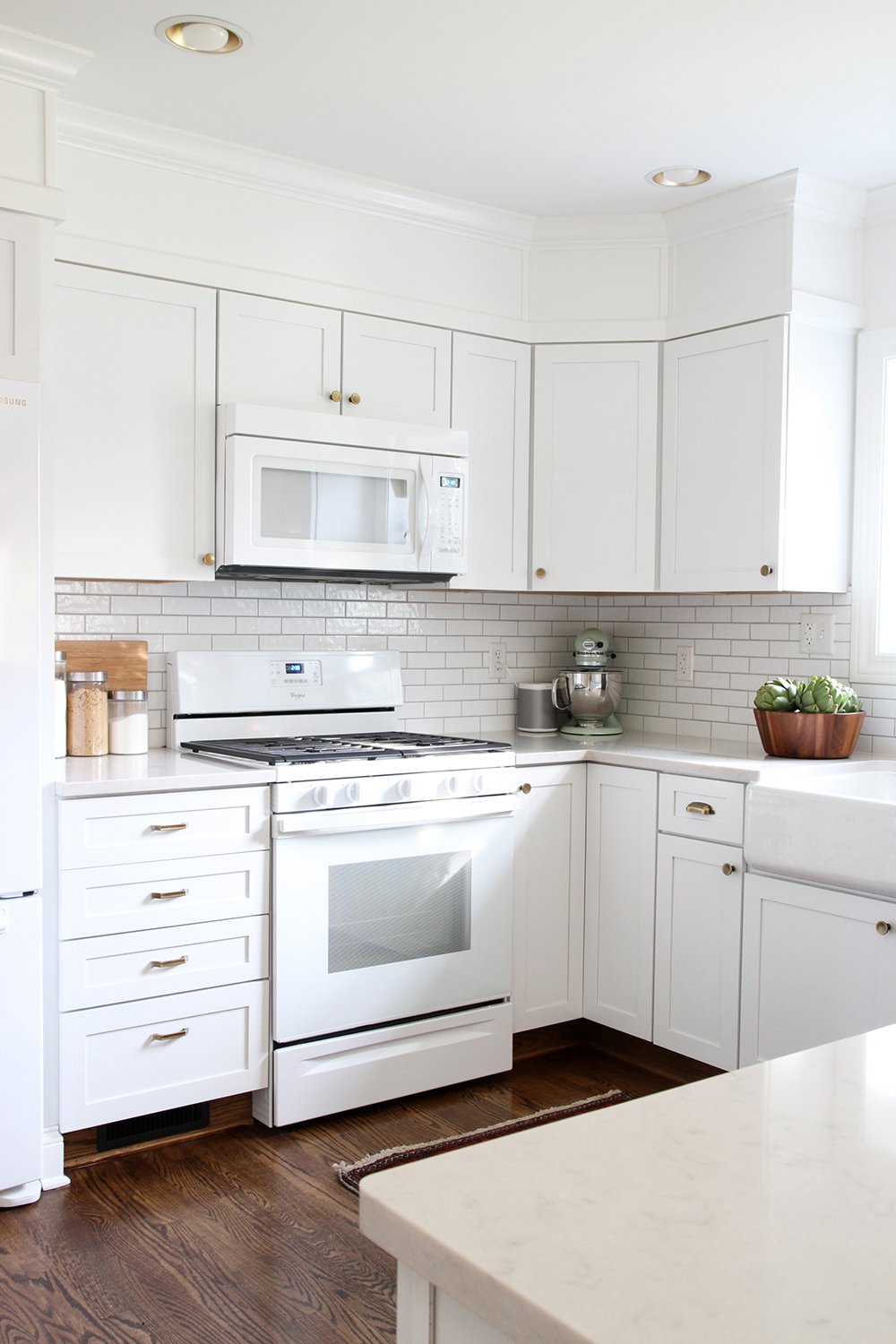 Lastly, I wanted to share my personal list of five rules for recessed lighting…
Lastly, I wanted to share my personal list of five rules for recessed lighting…
R U L E S
Emmett would literally go crazy with can lights if I would let him. He LOVES installing them and thinks they’re the best thing ever. What is it with guys and lighting? I’ll admit, they’re great- but in moderation. Luckily by now, he knows “my rules” and asks prior to cutting a hole in the ceiling.
- ALWAYS install can lights on a dimmer // being able to adjust the intensity is key.
- DO NOT get carried away // unless you want a ceiling that looks like swiss cheese and shines like the sun.
- Be INTENTIONAL about placement // frame vignettes in a functional way.
- DO NOT rely on recessed lighting alone // combine can lights with a variety of other fixtures for the best, balanced look.
- STAY AWAY from cool bulbs // because nobody wants a kitchen that feels like a doctor’s office- clinical is not a good look.
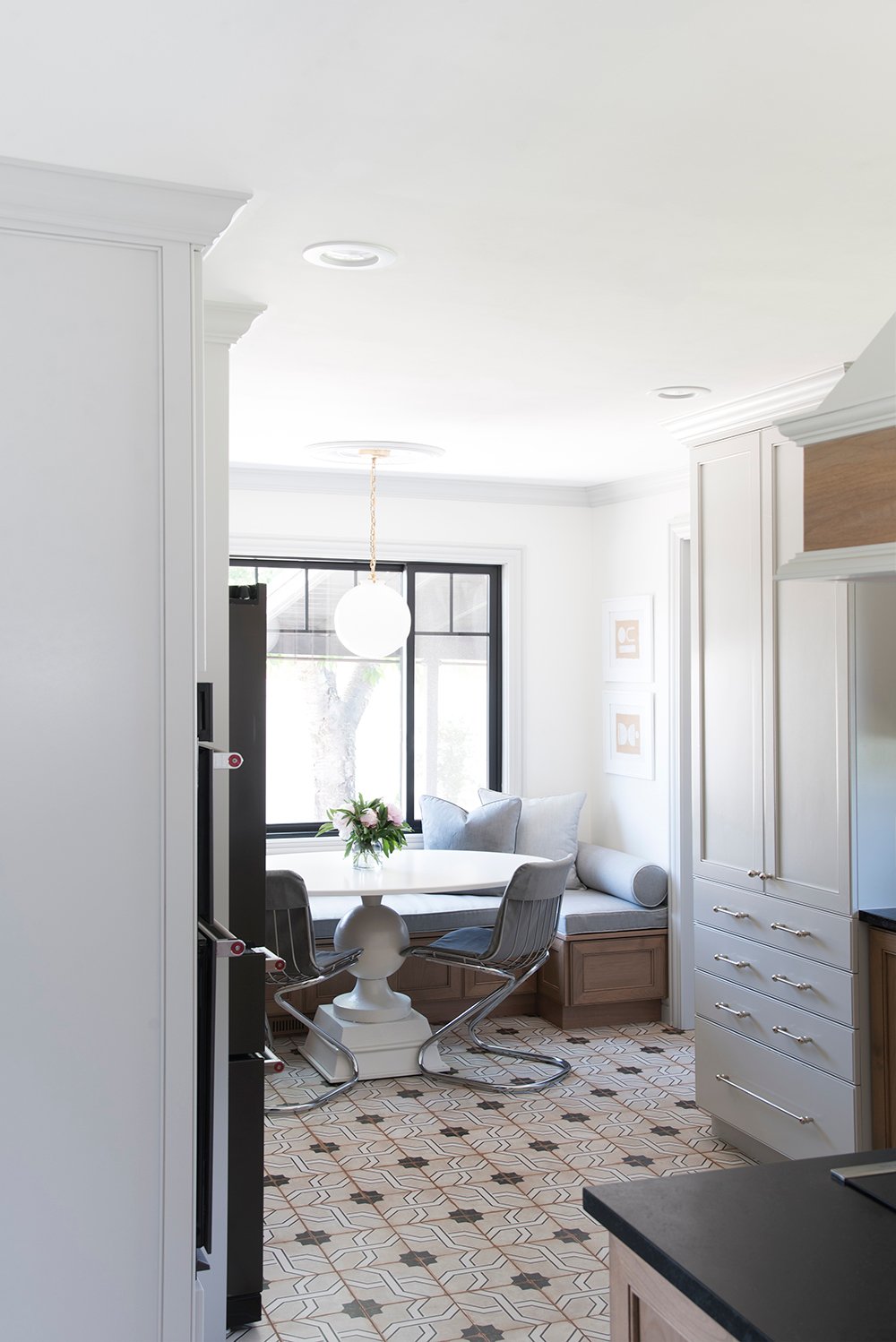 I hope this post helped shed some light (see what I did there?) on recessed fixtures! Please leave any additional questions in the comments below. Lighting can really make or break a space, and these little details are more important than they seem. I promise you’ll be happy you spent the extra time creating a lighting plan!
I hope this post helped shed some light (see what I did there?) on recessed fixtures! Please leave any additional questions in the comments below. Lighting can really make or break a space, and these little details are more important than they seem. I promise you’ll be happy you spent the extra time creating a lighting plan!
